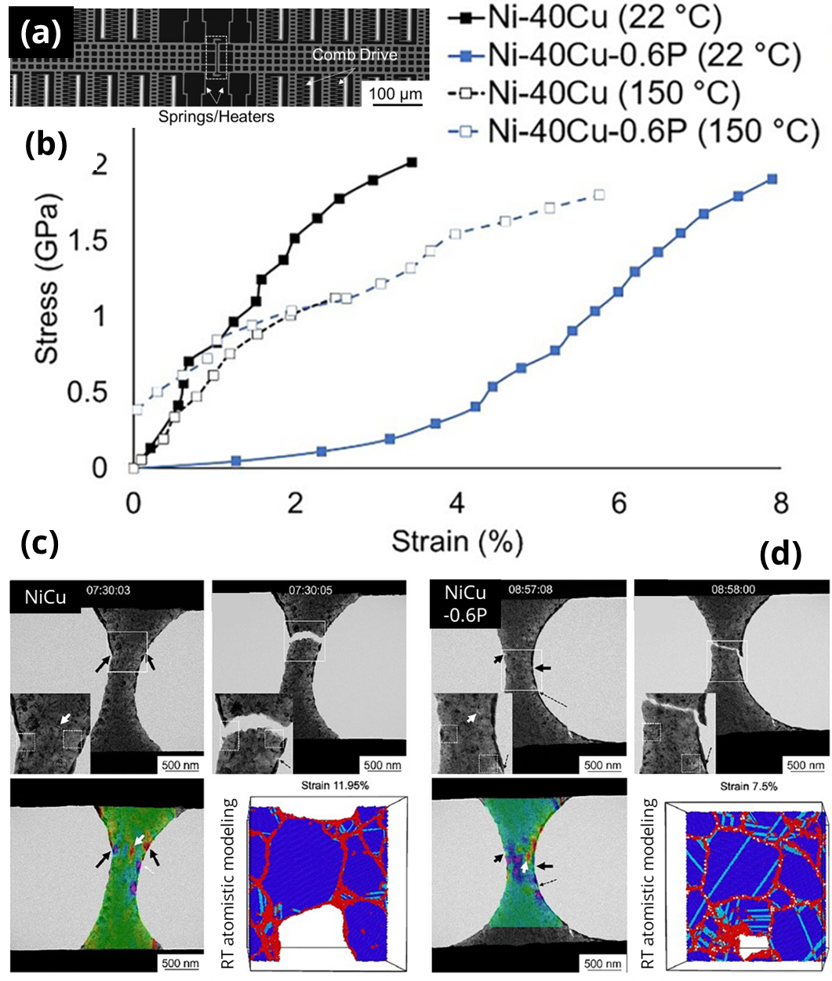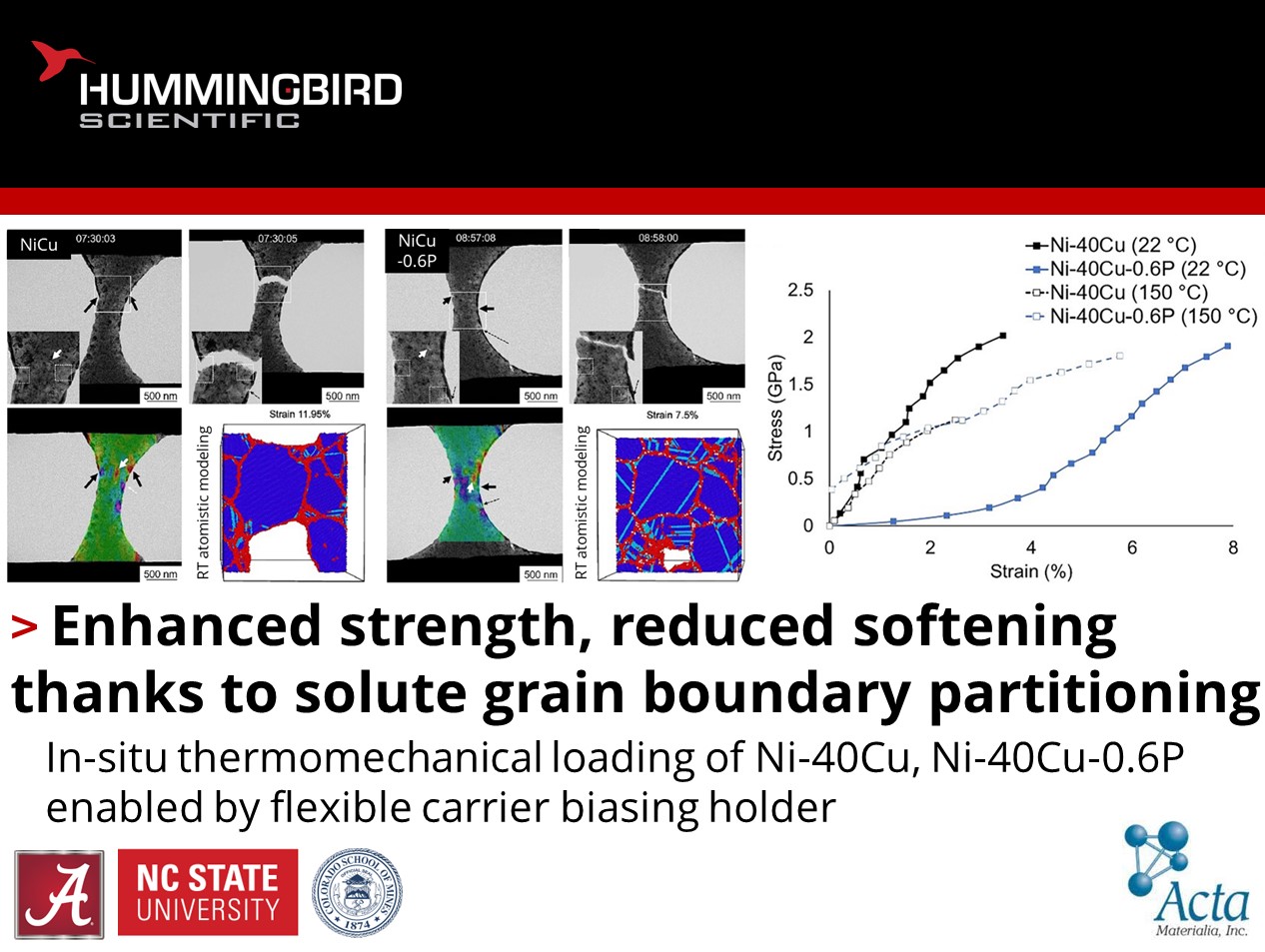How can a flexible TEM biasing holder enable in-situ thermomechanical loading?
Thomas Koenig, Gregory B. Thompson, and their colleagues at the University of Alabama, North Carolina State University, and Colorado School of Mines published recent work using the Hummingbird Scientific in-situ electrical biasing sample holder to investigate the effect of phosphorus additions and temperature on nanocrystalline Ni-40Cu and Ni-40Cu-0.6P. The flexible sample carrier allows targeted biasing of a wide variety of MEMS devices with up to 8 pins. The range of structure-property relationships that can be investigated, using the chips on Hummingbird Scientific’s menu, customizable or even homemade options, is ever increasing.

In this case, a MEMS device featuring an electrostatic comb drive with an integrated resistive heater was used to mechanically load two alloys under uniaxial tension and in-situ transmission electron microscopy (TEM) at elevated temperature (150°C). TEM was coupled with digital image correlation (DIC) and atomistic simulations to determine the effect of P on strength and softening with temperature. While both alloys softened with temperature, the ternary alloy retained more of its strength and failed with a finer fracture profile. The stabilization of the ternary alloy was attributed to grain boundary partitioning of P which limited grain boundary coarsening and was supported by atomistic simulations. The work demonstrates the utility of the flexible biasing holder in exploring thermomechanical relationships, with widespread application in deformations of materials and high-temperature structural alloys.
Reference: Thomas R. Koenig, Hongyu Wang, Yong Zhu, Ankit Gupta, Garritt J. Tucker, Gregory B. Thompson, Acta Materialia 263 119462 (2024) DOI: 10.1016/j.actamat.2023.119462
Full paper Copyright © 2024 Acta Materialia Inc.
View All News

